The Complete Guide to Beige Skin Tones

Key Takeaways
**Warm beige skin** is somewhere between fair and tan with golden/peach undertones, which makes it flattering for makeup and clothing. Think soft, radiant look in natural daylight that plays well with light and dark colors.
💫 Discover Your Complete Color Palette
Ready to discover all the colors that make you look radiant? Our comprehensive color analysis will reveal your complete personal palette - perfect for hair, makeup, and wardrobe decisions.
Take Color Analysis Quiz →Match your surface tone with foundation and verify your undertone with the tried-and-true tests of vein color, sun reaction, jewelry and neutral fabric in natural light. Even if your skin tans or lightens, undertones remain the same.
Trust a **skin undertone**s chart, and always test products in the daylight to avoid being off-color. Go for warm beige/golden beige foundations for a perfect match.
Construct your palette with **warm beige skin tones**. Go for peach or coral blush, warm brown bronzer, gold or nude eyeshadows and lip colors like coral or terracotta.
Go for earth tones and rich jewel hues for balance and contrast. Think olive green, mustard yellow, warm reds, cream and ivory but steer clear of very cool or neon shades.
Shield and shine your skin with daily sunscreen, moisture and mild exfoliation. Customize care and saluting your special hue, that genes and habits define your shine.
Warm beige skin color is a light-to-medium tone with golden or peach undertones that reads soft and sun-kissed. It tends to go beautifully with earthy makeup hues, like caramel, terracotta and warm pink.
This skin tone looks great with gold jewelry and off-white fabrics. In sunlight, it's more golden than olive. To match foundation, try shades labeled "warm," "golden" or "beige" along the jaw in daylight.
Below, discover easy makeup, fashion, and undertone tips.
What is warm beige skin color
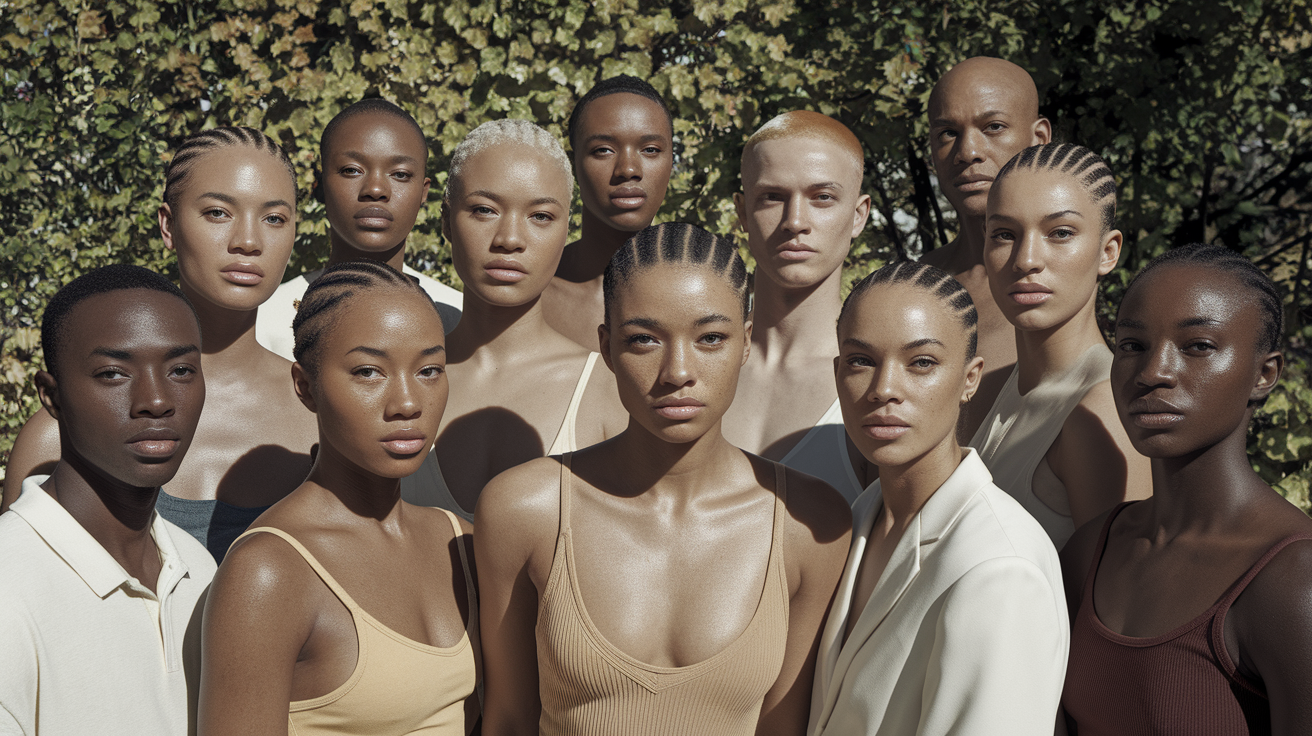
Around the warm beige skin color, it reads sun-kissed and not rosy and falls somewhere in between fair and tan. In daylight, it can appear glowing, softly highlighting both dark and light colors. Compared to neutral beige, it's warmer; compared to cool beige, it omits the pink or bluish cast.
Most warm beiges exhibit a **neutral undertone** that tends warm, with overtones of medium beige to dark brown, providing versatility in makeup and clothing.
1. The surface tone
Surface tone is the color you see in the mirror. In warm beige skin, it has a creamy softness, light sand in color, deepening to toasted beige after exposure to sun.
Sun, acids/retinoids, and health habits can shift this surface appearance. A vacation tan can nudge it in deeper beige territory, while a mild exfoliant can make it appear brighter. Many observe a minor seasonal fluctuation throughout the year.
FOUNDATION — match foundation to your present surface tone, not to last season's. Test on the jaw in daylight; the right shade melts away.
2. The undertone
Undertone is that consistent color underneath the skin. It directs what makeup, hair, and clothes appear right. Warm beige generally has yellow, golden or peach undertones, although some have an olive undertone, which is a subtle greenish tint that can mute redness and impact the matching of shades.
Confirm your undertone with a chart, daylight swatches, and quick cues: gold jewelry tends to flatter warm and olive; true silver can wash it out, while mixed metals often look fine on those with neutral skin.
Notice that even though your surface can tan or lighten, undertone remains consistent. Warm beige people tend to look fantastic in peach, light olive, soft lime, and moss. These colors resonate the warmth without overshadowing it.
3. The genetics
Genetics shape both tone and undertone. Warm beige is common among mixed European, Middle Eastern and Mediterranean heritage, but it happens globally.
Melanin and the way pigment disperses in the skin characterize depth and warmth. Family traits often align: golden blonde, strawberry blonde, auburn, or warm dark brown hair; hazel, green, blue, or light brown eyes; and a tendency to tan rather than burn.
4. The variations
Warm beige ranges from light beige with golden undertones to darker tan beige. While some have peach overtones, others skew olive, providing a soft green cast that shifts how reds and pinks read.
Examples:
- Light warm beige: yellow-peach undertone; matches "light warm" foundations.
- Medium warm beige: golden undertone; suits "medium warm/neutral-warm."
- Tan warm beige: golden-olive undertone; fits "tan warm/olive."
Table:
- Light warm beige | yellow-peach | LW/Light Warm
- Medium warm beige | golden | MW/Medium Warm or N-W
- Tan warm beige | golden-olive | TW/Tan Warm or Olive
Knowing where you fall in this spectrum helps you select base shades, warm-infused browns for your hair, and clothing colors that harmonize instead of fight.
Identify your undertone
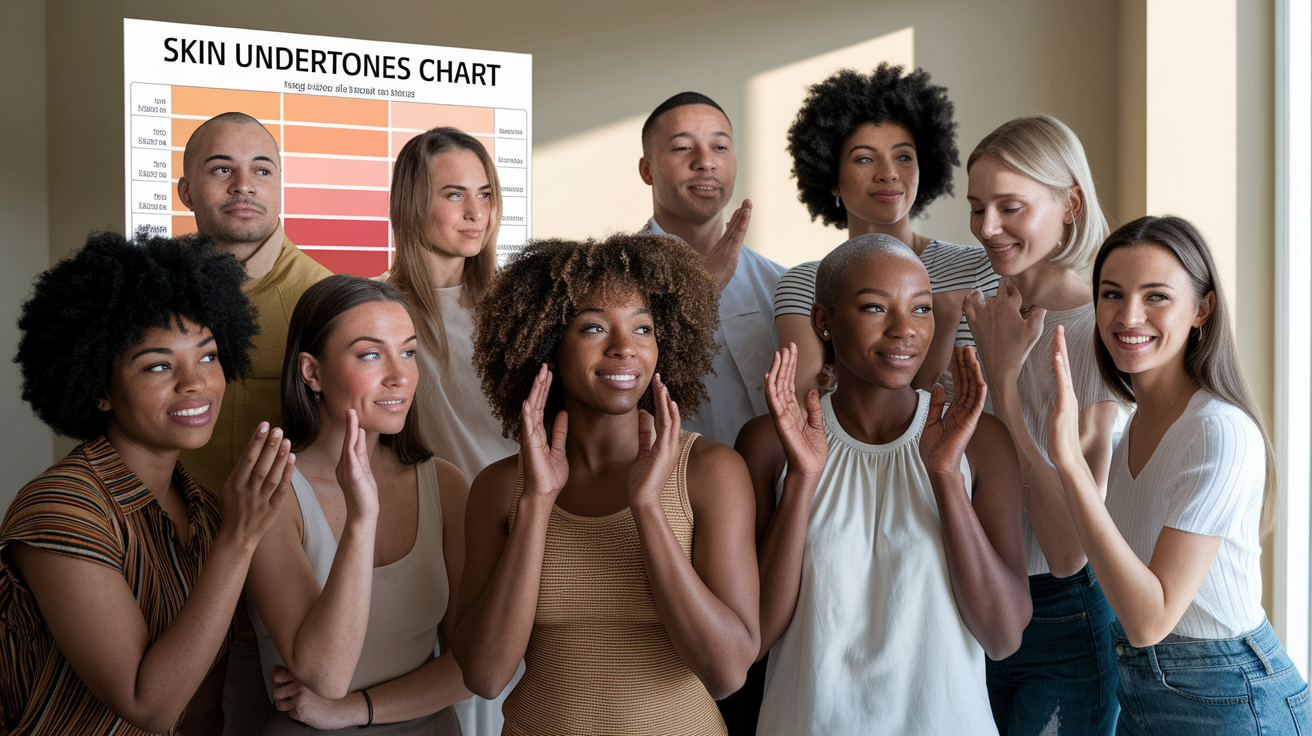
Undertone is the subdued color beneath your skin's top layer. It directs shade selections for foundation, lipstick and even shirts around your face. Three main types exist: warm, cool, and neutral. Surface tone may drift through the year with tan or fade, but undertone remains consistent.
Consult a skin undertones chart to match your skin to the standardized categories, then verify with tests performed in strong natural light. This reduces guesswork, keeps your makeup from clashing, and makes skin appear radiant and not washed out!
Vein color
Flip the inside of your forearm up and check out your veins in front of a window. The vein test is fast, but light alters all, so move beyond yellow indoor bulbs and tinted car windows.
If the veins appear mixed, don't freak out. A lot of people read both green and blue and slide into a neutral area. Re-visit at mid-day, and be sure to compare both wrists, because one may develop color more prominently.
- Warm: veins read green or olive.
- Cool: veins read blue or purple.
- Neutral: veins shift between blue and green, or look unclear.
Sun reaction
Warm beige skin typically tans easily and hardly burns, as it contains more melanin. If you tan to caramel or honey color after a brief period outside, you probably fall in the warm to neutral range.
Take sun reaction as a hint, not a dictate. Others scorch once at the beginning of summer, then bronze. Some tan on the body and remain lighter in the face from sun block.
Make notes for one week after time outdoors– if you deepen with minimal redness, that reads warm or neutral. Important: repeated sun exposure deepens surface color but never changes the undertone. Shield your skin with SPF 30+ even during testing.
Metal preference
The jewelry test is so fuss-free. Compare yellow gold, rose gold and silver against your face in daylight then see which one awakens your skin.
Gold complements warm beige skin because it resonates with its golden tones. Silver or white gold tends to look best on cool undertones, accentuating pink or rosy hues. If both metals look equally good on you, you may be neutral.
Take this as one data point with the vein and fabric tests so you're not relying on a single signal.
Neutral fabric
Drape a bright white tee and a cream scarf near your face to enhance your unique skin tones.
- Checklist for accuracy: bare skin, no makeup or tinted SPF.
- Mid-day light, sit by a window or go outside.
- Hold pure white next to off-white/cream side by side.
- Watch for effects: stark white suits cool; cream, ivory, or warm off-white suits warm beige.
- Snap them both for a second look — the camera can pick up drabness or ash.
The beige skin color spectrum
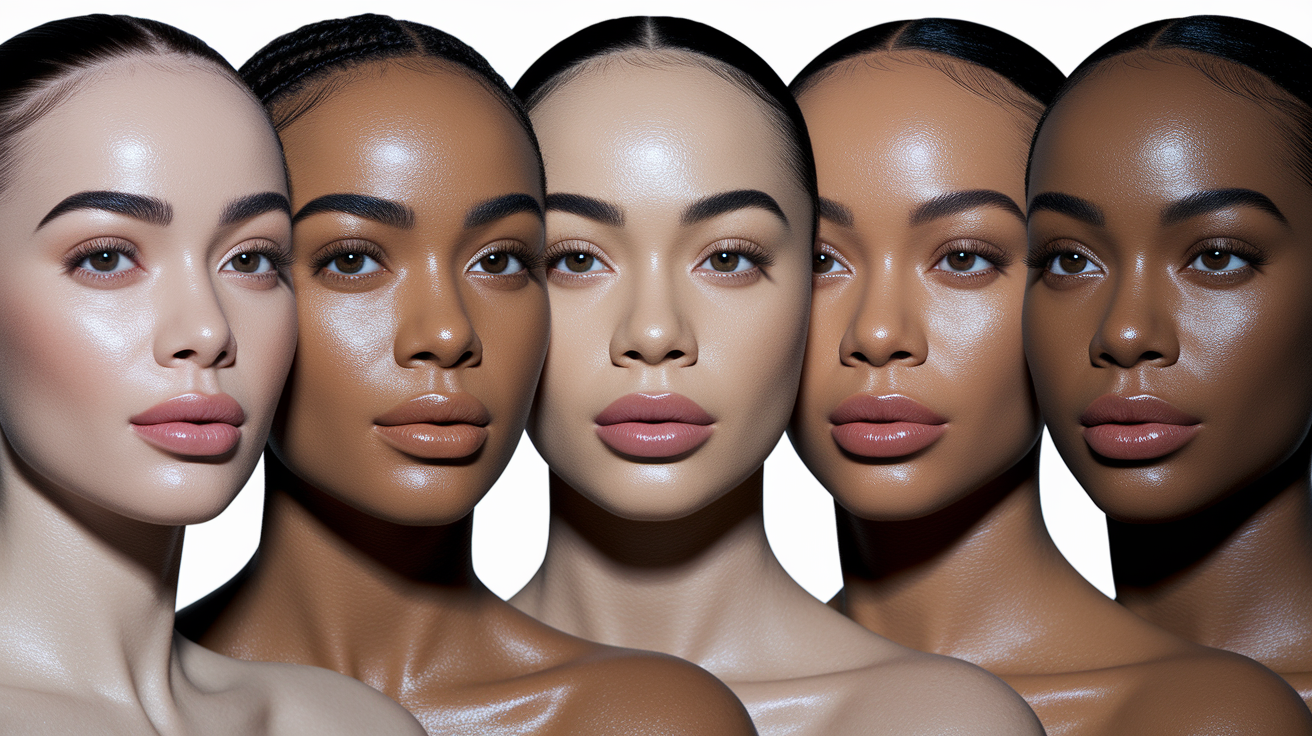
Beige stretches across a broad tan band between light and deep, influenced by melanin and warm, cool, or neutral undertones. Think pale ivory beige, traditional medium beige, olive beige, and deep golden beige. It's where a lot of the Mediterranean or Hispanic genes hang out, frequently with a nice warm, golden tan that complements various skin tones.
Olive tones hang out here, displaying a blend of warm and neutral with a hint of green shadow. Shade can shift through the year—sun heats melanin and intensifies tone, so your spot on the spectrum is not static. Understanding your skin tone depth can help you choose the right foundation shades.
Beige lives on the light, medium, and tan lines. Light beige could appear as ivory with a gentle peachy or pink hue. Medium beige reads balanced and "neutral," yet small shifts matter: a hint of gold lifts warmth, while a touch of rose cools the face, catering to those with a neutral skin tone.
Tan or deep golden beige contains more melanin, providing a darker base that complements bronzes and terracotta perfectly. Olive beige can seem muted indoors and glow outdoors, hence it 'wears' both cool and warm colors well. Many beige skinned beauties can wear a color from any of the three undertones—cool berry, warm coral, or neutral taupe—if the depth and saturation fit their unique skin shades.
Matching products can be tricky – beige often resides somewhere between warm and cool. Check undertone with three quick cues: vein test (blue/purple reads cool, green reads warm, mixed reads neutral), jewelry test (silver flatters cool, gold flatters warm, both suit neutral), and white-paper test (face looks rosy next to white if cool, golden if warm, balanced if neutral).
Re-test in natural light, and re-check each season since a light tan can push you warmer. For cosmetics, choose depth first, then adjust for undertone. If you hover between two, mix or use a neutral base and warm or cool concealer.
For clothes, choose palettes by undertone: warm beige loves camel, rust, and cream; cool-leaning beige likes charcoal, berry, and ice blue; olive beige shines in teal, saffron, and muted plum. Knowing your specific skin tone allows for better choices in wardrobe and makeup.
| Shade name | Depth category | Likely undertone(s) |
|---|---|---|
| Pale ivory beige | Light | Neutral-warm or cool-neutral |
| Light sand beige | Light/Medium | Neutral with peach |
| Classic medium beige | Medium | True neutral or neutral-warm |
| Olive beige | Medium | Neutral-warm with green |
| Golden tan beige | Tan | Warm/golden |
| Deep golden beige | Tan/Deep | Warm with subtle red or olive |
Understanding your place on this spectrum allows you to select exact shades in foundation, tinted sunscreens, and even wardrobe colors that appear natural and remain stable throughout the day.
Enhance your natural glow
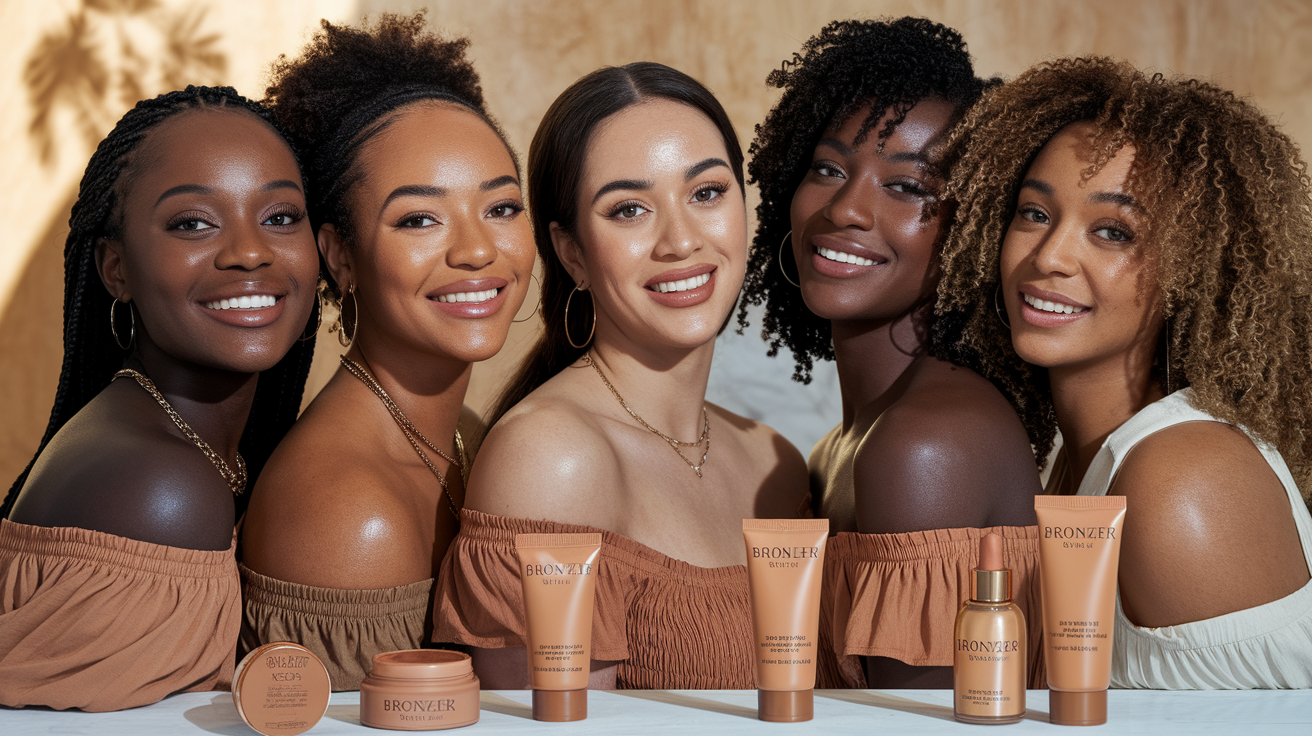
Bring out your natural glow. A warm beige skin tone contains soft golden undertones that appear radiant when tone, texture, and care are in harmony. The objective is a consistent skincare routine and carefully selected colors that complement those neutral undertones, ensuring the overall complexion appears balanced, illuminated, and serene.
Makeup shades
Select a base up front that complements your specific skin tone. Check your foundation labels for words like "warm beige," "golden beige" or "neutral warm." Proof along your jaw in daylight, not store light, and wait a minute to see if it shifts. If you sit closer to a neutral skin tone, a foundation with neutral undertones can keep the match true and prevent your face from leaning too yellow or pink.
Mix blush and bronzer for your day. A peach, coral or warm brown blush adds life with no harsh edges, while tawny or cinnamon bronzers enhance your overall complexion. For a glow, go with champagne or soft gold highlighters – no icy tones that can look gray on golden skin tones.
Earthy tones are a great match for your eye color. Accentuate your natural glow with camel, toffee, rust, and bronze or deep chocolate shadows that effortlessly blend with warm beige skin tones. Golds and copper really catch the light. If you love contrast, go for a cool slate liner or deep emerald. The cool edge can help make warm eyeshadow looks more striking without battling your skin tone depth.
Lips can dictate the vibe quickly. Coral, peach, terracotta, nude caramel, dusty rose, and muted mauve are all flattering for those with beige skin tones, adding quiet polish. When you want more pop, true red or tomato red reads classic. Swatch in daylight to maintain equilibrium.
Figuring out your skin undertone aids all these choices. Take the white vs. off-white test near your face and swatch in daylight. Warm beige usually looks better against off-white. If gold and silver jewelry both look good, you tip neutral and can mix warm and cool makeup with abandon.
Clothing palette
Outfits can elevate your natural radiance – with ZERO makeup. Nothing complements a natural glow like earth tones, warm neutrals and rich jewel hues that reflect golden skin and make it appear serene and luminous.
Very cool pastels and neon brights, skip, they can wash out or clash. Base your palette in olive green, mustard yellow, rust, camel, warm red and cream for a base that works year-round.
- Olive, moss, sage
- Mustard, ochre, marigold
- Brick, rust, warm red
- Camel, tan, cream
- Teal, emerald, bright blue, watermelon, true red (accent)
Hair color
Honey blonde, golden brown, and warm auburn illuminate warm beige skin by resounding its underlying tone with gentle lift and shine.
Stay away from ashy or cool-black dyes–they tend to flatten out the face. Put caramel or golden highlights at the crown and mid-lengths to frame the face and add dimension.
- Honey blonde, butterscotch, dark caramel
- Golden brown, chestnut, light toffee
- Warm auburn, copper brown
- Caramel, gold, or bronze balayage
Skincare considerations
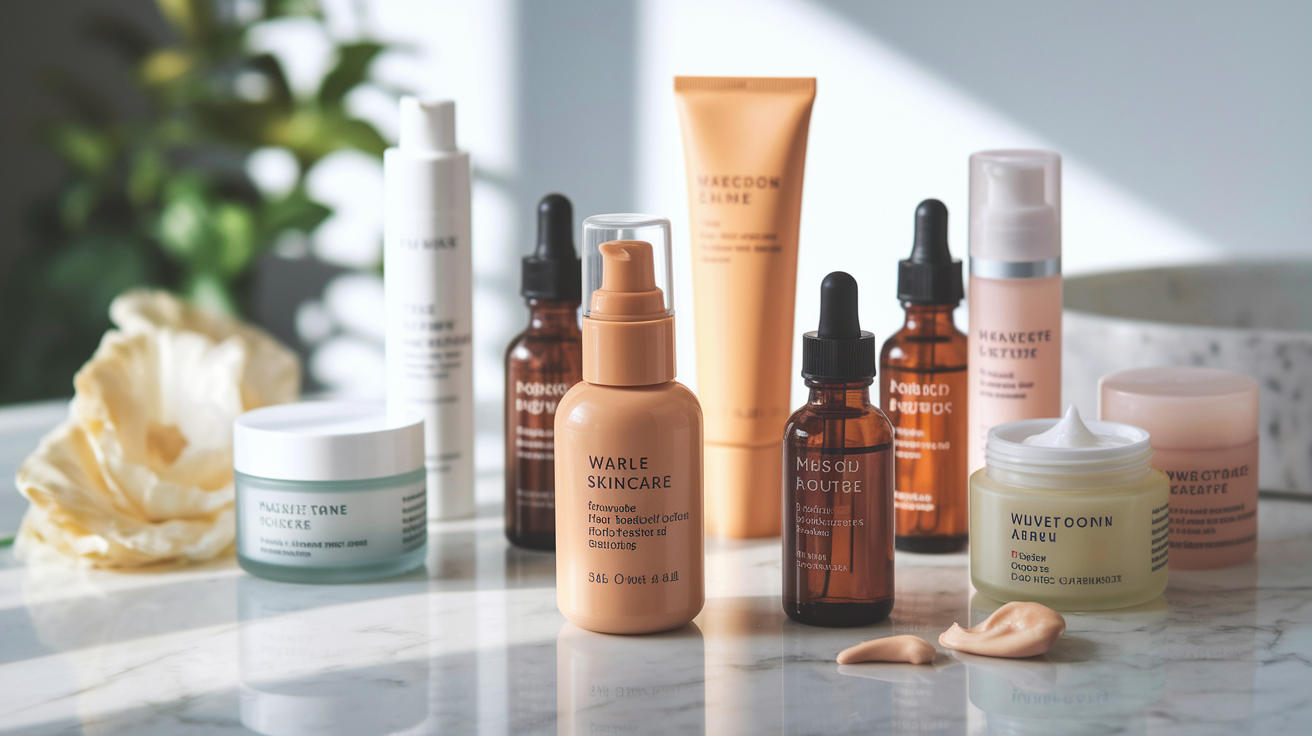
Warm beige skin typically falls right in the middle, so little shifts in tone pop quickly. Skincare choices work best when they factor in three things: skin concerns, skin type, and skin tone. Begin with undertone, as it directs shade selections and how the skin responds to light.
Undertones fall into three types: warm, cool, and neutral. This is distinct from depth or overtone. Overtone may shift with season or sun or even irritation, but undertone remains constant. To discover yours, check your veins in strong daylight (green hints warm, blue or purple hints cool, mixed hints neutral), test gold vs silver jewelry near your face, and see how white vs cream fabric looks on you. Figuring out undertone requires more than a skim, but it doesn't have to be complicated.
Emphasize the need for daily sunscreen to protect warm beige skin from UV-induced pigmentation changes.
UV light causes melanin to want to group together, which can cause patchy spots on warm beige skin. **Daily broad-spectrum sunscreen** helps block the UVA and UVB that fuel dark spots and early lines. All need to wear broad spectrum SPF 15+ but fair types soak up more solar rays and should favor a higher SPF.
Warm beigey hues work excellently with SPF 30+ daily city living and SPF 50 for extended outdoors time. Pick textures that fit your skin type: gel or fluid for oily, lotion for combo, cream for dry. Reapply every 2 hours outdoors and post sweat or swim. Tinted mineral formulas can help even tone while cutting white cast.
Recommend hydrating skincare products to maintain a healthy, luminous complexion.
Moisture keeps it sleek so the light reflects in a gentle manner. Go in with a mild low-pH cleanser, then layer on humectants like glycerin or hyaluronic acid, occlude with a lightweight cream with squalane or ceramides, and spritz with a face mist when air is dry.
If you have oily skin, opt for a gel moisturizer and spot treat the dry areas. If skin is dry, mix in a few drops of plant oil at night. Sheer luminizer on high points is a quick, zero-coverage method of highlighting skin.
Suggest gentle exfoliation to prevent dullness and reveal natural radiance.
Warm beige skin can look flat when dead cells accumulate. Go slow: 1–2 times per week with a mild chemical exfoliant like lactic acid (5–10%) or a PHA toner. Enzyme masks — excellent for the sensitive types.
NO SCRUBS THAT SCRATCH! Moisturizer and sunscreen, since new skin is more light-sensitive.
Advise tailoring your skincare routine to address specific concerns like uneven tone or mild redness.
Uneven tone: add vitamin C (8–15%), azelaic acid (10%), or niacinamide (4–5%). Dark spots impact all tones, but deeper tones have increased risk, so use brighteners with care and patience.
Mild redness: look for fragrance-free, alcohol-free products, use azelaic acid or green-tinted moisturizer to calm look, and patch test. Breakouts: use salicylic acid 0.5–2% and non-comedogenic sunscreens.
Modify steps with season, your overtone changes, so shades and intensities might require adjustments.
Beyond the surface
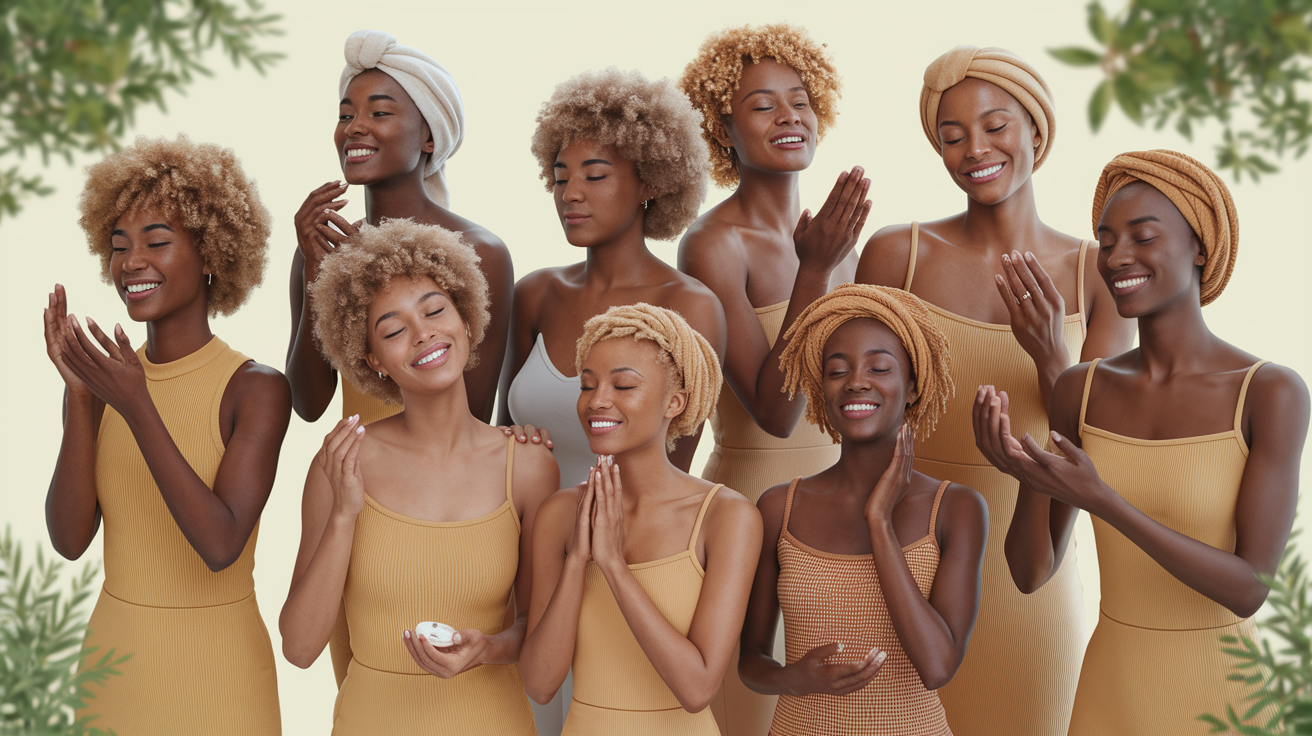
Warm beige skin exists at the intersection of biology and habit and heritage. Undertones are the base note: warm, cool, or neutral. Warm undertones exhibit yellow, peach, or gold. Cool reads in pink, red, or blue. Neutral ground in between.
Undertone remains consistent throughout the year, however, skin tone will adjust with sun, weather, or skincare. By which I mean to say, that’s why a summer tan can make your complexion hue darker, but your gold or peach undertone remains the same. This awareness aids you in choosing colors that appear vibrant on your skin, not lifeless.
Genetics provide the undertone, but features can mix. Some boast a transparent warm base with olive nuances, others blend warm and cool touches. You can decode hints in hair, eyes, and lips. Golden brown hair, amber or hazel eyes and a peach lip tend to all be warm colors.
Ash brown hair, gray-green eyes and a rose lip lean cool. Most land in neutral, with ambivalent characteristics and wide spectrum. If you're not sure, try test shades. Compare two liquid foundations on your jaw: one yellow-based, one pink-based.
See which blends without effort by daylight. Swatch a scarf test of soft gold, camel and ivory against cool silver, icy blue and charcoal. Warm beige skin, on the other hand, tends to glow with camel, terracotta, marigold, olive and warm white. Cool undertones glow in blue-based reds, cobalt, and icy neutrals.
Neutral undertones rock most shades with slight adjustments to intensity and shine. When in doubt, either use online tools or visit a makeup artist for an accurate match.
Own your tone. A warm beige base for quiet glow that complements earth tones, sunlit golds and soft corals. Pick makeup that mirrors your undertone: yellow-based foundations, peach or apricot blush, gold or bronze highlighter, and brown or olive liner.
On the lips, opt for warm rose, cinnamon or coral. In prints, take sand, rust, moss and warm navy. As for jewelry, gold, brass or bronze are generally flattering, but mixed metals can work on neutral skin.
Self-care keeps skin and mood even. Defend with oil-free broad-spectrum SPF 30+ to maintain undertone clarity. Think mild cleansing agents, straightforward ceramide creams, and vitamin C serum to maintain tone consistency.
Sleep, hydration and a good diet with plenty of fiber and healthy fats aid barrier health. Stress reflects on skin, and small daily habits — walks, breath work, or a journal — can help calm flare-ups and dullness. Record what works.
Small, consistent actions establish faith with your skin and increase assurance. Real beauty deepens when you respect the face you inhabit.
Conclusion
Warm beige skin falls into a sweet spot. Delicate sun hue Soft shadow. Not too pale. Not too bronze. Bright gold highlights appear in direct sunlight. Kind of like caramel foam on coffee. Or sand in late noon.
Little changes provide a great boost. A sheer peach blush wakes the face. Gold highlighter brings a fresh glow. Soft brown liner defines the eyes. Coral or warm rose lips pull it all together. Daily SPF 30 keeps tone even. Niacinamide helps to soothe hyperpigmentation. Kind acids polish the coarse portions.
Style picks help, too. Cream, camel, olive and rust look lush. Silver will do. Gold always sings.
Ready to dial in your match? Reveal your shade, your staple base and your highlight. Let's construct an easy strategy you can employ.
Frequently Asked Questions
What is warm beige skin color?
Warm beige skin tones exhibit a neutral-to-warm undertone, featuring hints of yellow, golden, or peach. This specific skin tone falls within the light/medium zone, resulting in a soft, balanced, slightly sun-kissed glow devoid of heavy pink or cool undertones.
How can I identify if my undertone is warm beige?
Look at your veins in natural light to determine your skin tone. Greenish veins typically indicate warm skin tone undertones, while gold jewelry might appear more flattering than silver for those with neutral skin tones.
Where does warm beige fall on the skin color spectrum?
Warm beige skin tones range from light-medium to medium, bridging fair to tan. The key lies in the warm, golden-peach undertone, highlighting that two individuals can share warm beige undertones yet possess different skin tone depths.
What makeup shades flatter warm beige skin?
Opt for warm or neutral foundations labeled as 'warm,' 'golden,' or 'neutral skin tone' to complement your overall complexion. Experiment with peach or coral blush, golden highlighter, and earthy eyeshadows like bronze or copper for a harmonious look.
How do I enhance a natural glow on warm beige skin?
Apply a vitamin C serum for radiance to enhance your overall complexion. Use a light foundation that complements your specific skin tone, and apply a gold highlighter to the high planes for a glowing effect.
What skincare concerns are common with warm beige tones?
Warm beige skin tones may exhibit sun-induced hyperpigmentation, leading to uneven skin tone. A skincare routine with daily SPF 30+, antioxidants, and niacinamide can help, while spot-treating dark marks with azelaic acid or retinoids is advisable.
How does culture and sun exposure affect warm beige skin?
Lifestyle, climate, and sun habits affect the depth and tone of your skin tone, especially for those with a neutral skin tone. True sun protection and gentle brightening care keep things in check while honoring your natural undertone.